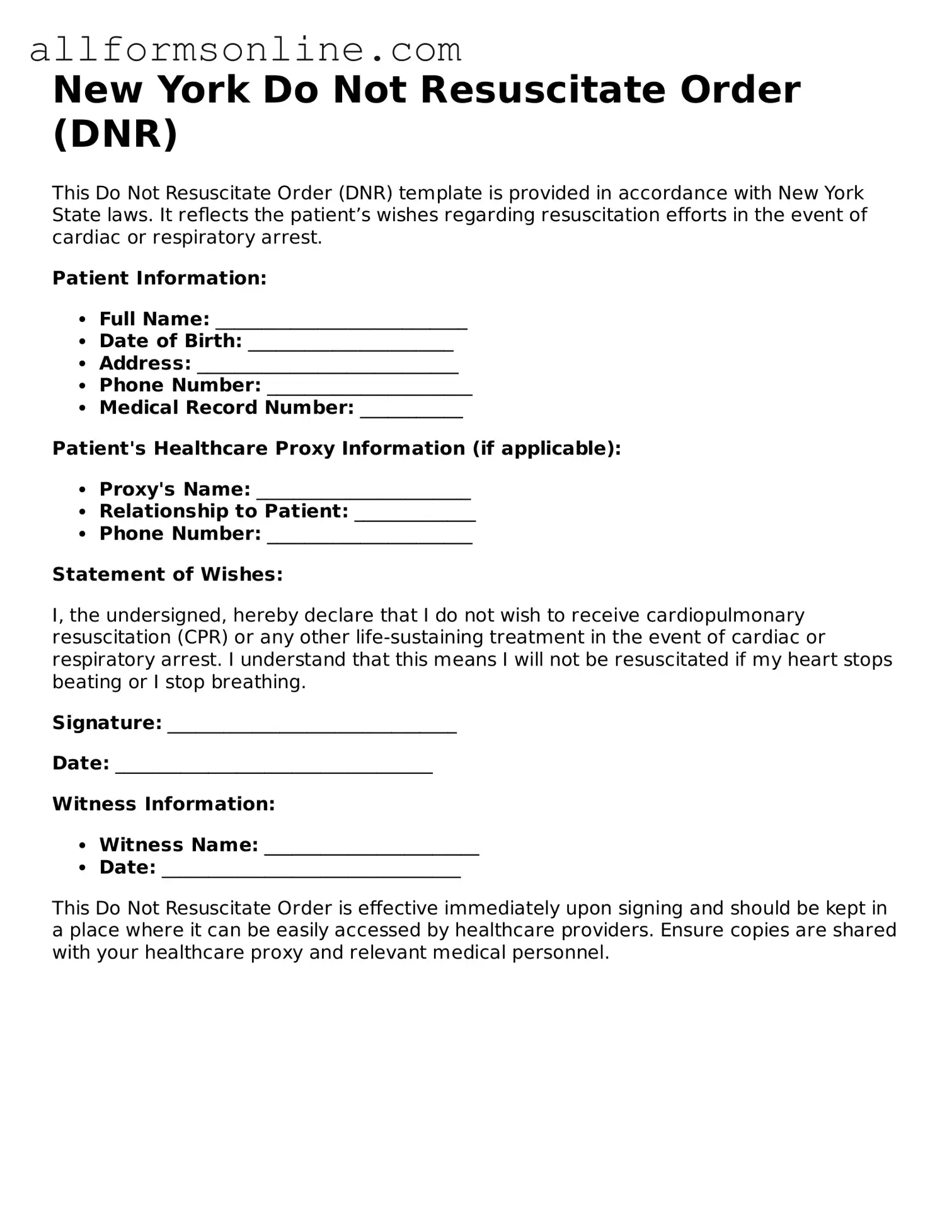What is a Do Not Resuscitate (DNR) Order in New York?
A Do Not Resuscitate Order is a legal document that allows a person to refuse resuscitation efforts in the event of a cardiac arrest or respiratory failure. In New York, this order is specifically designed for patients who have a serious illness or condition and wish to avoid aggressive medical interventions that may not align with their personal values or wishes.
Who can request a DNR Order?
In New York, a DNR Order can be requested by a patient who is at least 18 years old and has the capacity to make medical decisions. If the patient is unable to make decisions, a legally authorized representative, such as a healthcare proxy or family member, may request the order on their behalf.
How do I obtain a DNR Order in New York?
To obtain a DNR Order, you must complete the official New York State DNR Order form. This form needs to be signed by both the patient and their physician. The physician must confirm that the patient has a serious illness or condition that justifies the order. Once completed, the form should be kept in an easily accessible location, such as with the patient’s medical records or at home.
Is a DNR Order valid in all healthcare settings?
Yes, a properly executed DNR Order is valid across various healthcare settings in New York, including hospitals, nursing homes, and at home. However, it is essential to ensure that the healthcare providers are aware of the order and have access to the documentation. Communication with medical staff is crucial for the DNR to be honored.
Can a DNR Order be revoked?
Absolutely. A DNR Order can be revoked at any time by the patient or their authorized representative. To revoke the order, simply destroy the original document and inform healthcare providers of the decision. It is advisable to complete a new form if you wish to change your preferences regarding resuscitation.
What happens if there is no DNR Order in place?
If a patient does not have a DNR Order and experiences a medical emergency, healthcare providers are required to initiate resuscitation efforts. This can include CPR, intubation, or other life-saving measures. Without a DNR Order, the default response is to attempt to save the patient’s life, regardless of their wishes.
How does a DNR Order affect other medical decisions?
A DNR Order specifically addresses resuscitation efforts but does not limit other medical treatments. Patients can still receive necessary medical care, including medications, pain management, and comfort care. It is important to have discussions with healthcare providers about the full scope of care preferences to ensure that all wishes are understood and respected.
